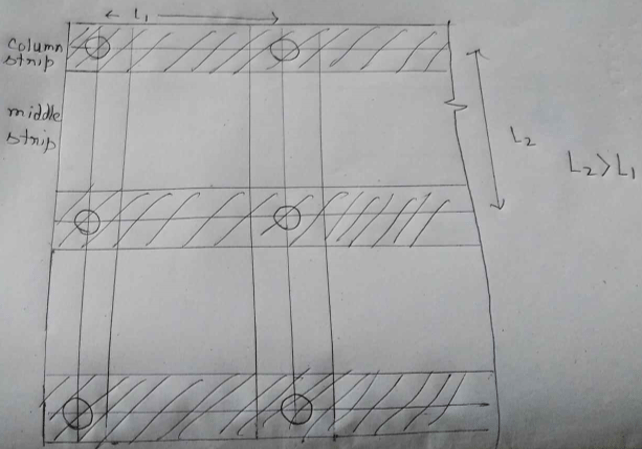This set of Design of RC Structures Multiple Choice Questions & Answers (MCQs) focuses on “Flat Slabs”.
1. Which of the following provision is not there in the flat slab?
a) Provision of roof
b) Provision of column
c) Provision of column head
d) Provision of beam
View Answer
Explanation: The flat slab is built with the support of columns with reinforcement in two or more directions. Actually, the provision of beam is not made in flat slab as the flat appearance looks better in architectural point of view.
2. As compared to thickness of the slab, the drop is __________________
a) 25-40 % thin
b) 25-50% thick
c) 10% thin
d) 20% thick
View Answer
Explanation: The drop is the part off the slab around the column. It is of greater thickness (25-50%) as compared to the rest of the slab because load transferring takes place in this particular place.
3. The panel is a part of which of the following?
a) Circular slab
b) Sunshade
c) Flat slab
d) Waffle slab
View Answer
Explanation: According to recommendation of IS 456:2000 the panel is a part of the flat slab. If we draw centre lines connecting two adjacent columns, the area that is bounded in between the centre lines is called the panel.
4. The column strip of a flat slab is _______________
a) .25 times the length of the shorter span
b) .5 times the length of the shorter span
c) .25 times the length of the longer span
d) .5 times the length of the longer span
View Answer
Explanation: IS 456:2000 gives the column strip is .25 times the shorter span length of the flat slab.

5. A flat slab has various advantages as compared to normal slab.
a) False
b) True
View Answer
Explanation: For a flat slab the following are the advantages:
i. This is less likely to catch fire
ii. The construction work is comparatively easier
iii. It requires less form-work
iv. The cost of construction is relatively less.
6. Which of the following is the method of designing a flat slab?
a) Direct design method
b) Flat slab method
c) Column head method
d) Drop method
View Answer
Explanation: The direct design method is used to design flat slab. Another method of designing is equivalent frame method.
7. In direct design method minimum how many continuous spans is to be considered?
a) Two
b) Four
c) Three
d) Ten
View Answer
Explanation: According to codal provision the direct design method has some limitations. One of the limitations is we need to consider at least three continuous spans. Another limitation is the panel should be rectangular.
8. For a flat slab the flexural stress transferring co-efficient depends on which of the following (a1 = critical section of shear in the direction of moment, a2 = critical section of shear in the direction transverse of moment, l = length of the span)?
a) a1
b) a2
c) a1 & a2
d) l
View Answer
Explanation: The flexural stress transferring co-efficient is needed when unbalanced gravitational force or wind load or earth-quake force creates bending moment in the slab.
flexural stress transferring co-efficient= 1/(1+( 2/3)*(a1/a2)1/2).Therefore it depends on both a1 and a2.
9. The flat slab is a one-way slab.
a) True
b) False
View Answer
Explanation: The flat slab is a two-way slab as it is reinforced in two directions. This slab is not supported by girders or beams but by columns.
10. What is the minimum thickness of the flat slab?
a) 250mm
b) 150 mm
c) 125 mm
d) 750 mm
View Answer
Explanation: The thickness of the slab usually depends upon the effective span by overall depth ratio. The minimum thickness of the flat slab is 125mm by codal guidelines.
Sanfoundry Global Education & Learning Series – Design of RC Structures
To practice all areas of Design of RC Structures, here is complete set of 1000+ Multiple Choice Questions and Answers.
If you find a mistake in question / option / answer, kindly take a screenshot and email to [email protected]
